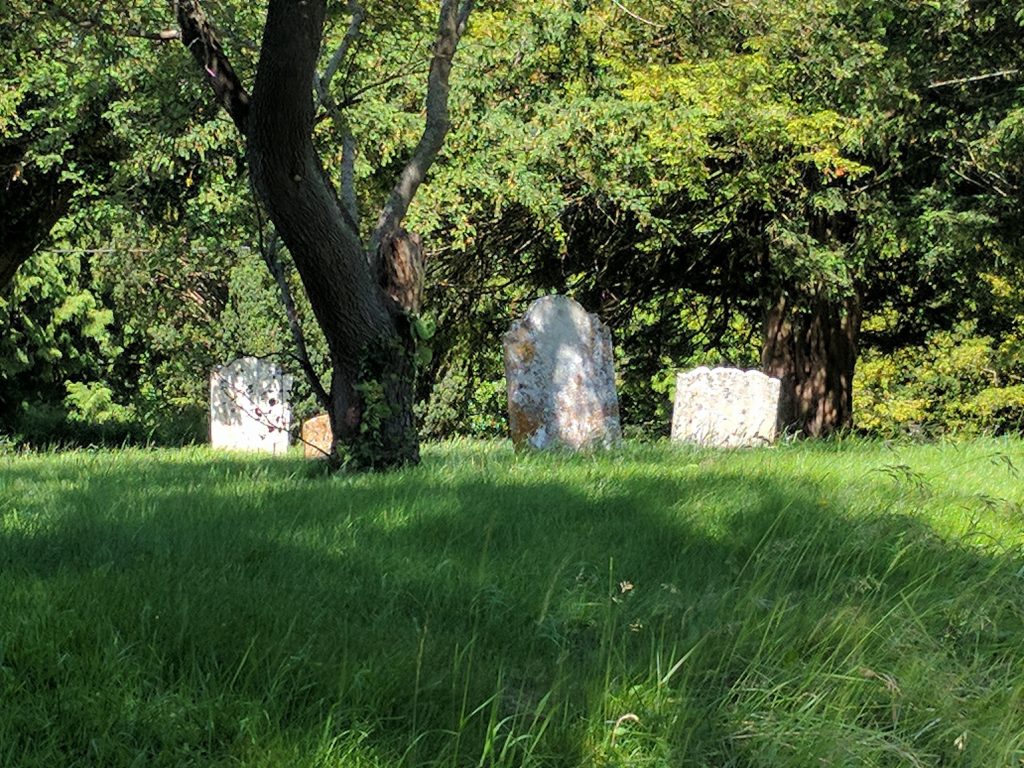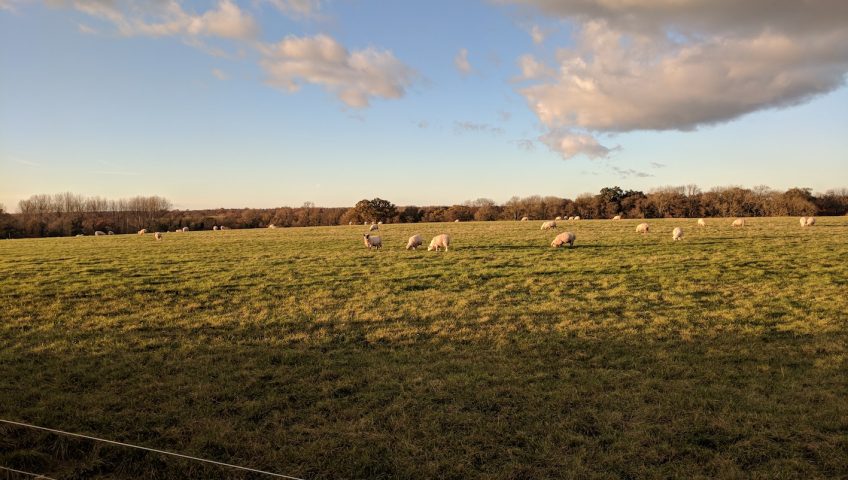
When is the right time to sample your soil?
I have written a lot in the past about how to sample soil, what tools you can use to make this process easier and how to plan your sample distribution for representative measurements. But how do you decide when to actually sample in the first place?
In this article I’ve broken down the process in to a series of simple steps or questions that you can reflect upon in order to help you decide when is the right time for you to sample. This means that you will have a (planned) approach ready before you even set foot on soil – making the whole thing easier.
To sample or not to sample? That is the question.
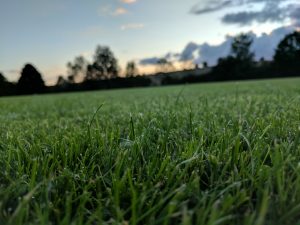 1) What information do you have about your land, plot or field already?
1) What information do you have about your land, plot or field already?
This will require you to know when you last tested the soil in this area. If it was more than 3 years ago, it is probably worth considering another test and if has been more than 5 years, it’s most definitely time to get that auger out again! If you have no data, how are you going to manage it? I recommend planning the annual budgets to cover soil analysis across an entire estate over a period of 3 or 5 years or in line with the crop rotations.
But, not so fast…
2) If you have already had a test, what did the results show?
If you implemented a programme of treatments or made focused applications due to imbalances or deficiencies (biological as well as chemical), you need to understand if there are sufficient concentrations still available/active or if things remain balanced. Chances are if you had a comprehensive analysis* within the last couple of years AND you have a good understanding of the effects of crop history, husbandry and organic/inorganic fertilisers or amendments you should consider a focused test to ‘sense check’ baseline levels and makes sure that they are in line with your expectations. A focused soil test may be slightly easier on your budget, although I do recommend spending as much as you can afford on soil analysis to ensure the most comprehensive data you can get. You only have one opportunity to collect data on your soil now and who knows what information you wish you knew in 5 years time. Over time this information helps you form a more complete story of your soil which is so valuable to drafting and implementing a long term soil management plan that will sustain the operation well in to the future.
*This would probably include Organic Matter, biology, minor and micronutrient concentrations in addition to major index tests and pH.
Timing
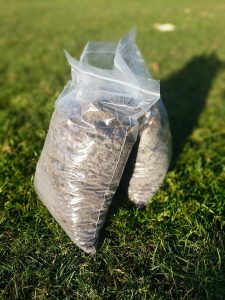
3) Sample history
Having established that this year is indeed the year to have your soil tested for a particular plot of field(s), we must then think about the precise time within the year. Data will generally be more helpful if it is comparative and so this means you should consider if repeat testing or scheduled cyclic analysis is it at a same time within the season or stage of crop as previous tests were performed.
4) Activity
If you sample now, will it be convenient to sample at the same date in 1,2,3 or 5 year’s time? It might be that at this moment in time there are exceptional circumstances and lower levels of grower/staff activity means that you have an (untypical) time and the capacity to sample and interpret results now, but actually you will be unlikely to have this opportunity at the same point in the season in coming years. This is so important because as mentioned before, you will want to build up a comparative picture of what is happening in your growing area, over time, by sampling at the same time in the season each time.
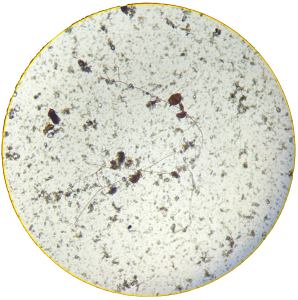
5) Active crop management
It may be that there are subsequent tests that you want to perform throughout the growing cycle of a crop – N, P, K, biological activities or mycorrhizal fungi etc. These can be treated as a one-off as they relate to that crop at that time and will inform a immediate and direct intervention, as a response.
Ultimately, managing soil health in the long run, is a ongoing process, a journey, rather than an activity you complete – Especially when intensively cultivating land. By thoroughly measuring your soil’s functional components, you are adding a Chapter to the story of how your soil works, every time you test.
6) Time of day
On an even more basic level, when we talk about the time of day that we should undertake the task of sampling, generally I would recommend earlier in the day wherever possible. The best time will be first thing in the morning, when plant sugar levels are lower and soil activity lower due to cooler night time temperatures and natural dormancy. Also, when collecting material for biological analysis, the Sun’s UV levels are also lower which ensures that microbial life in your sample are less likely to be affected (or destroyed) by the sun’s rays and is easier to protect bags of soil from heat and light whilst sampling other areas.
Conditions
7) Climate and weather
Natural and seasonal conditions play a huge role in determining your soil’s ability to function by directly (and also indirectly) affecting the Physical, Chemical and Biological aspects. Seasonal conditions may therefore affect the sampling timing. You definitely do not want to be sampling your soil during the height of a heat wave, monsoon or in middle of the icy, bleak mid winter so avoid any extremes.
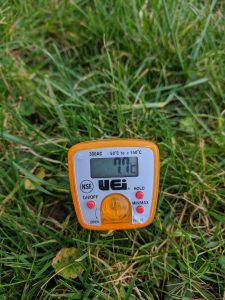
8) Temperature
Temperature is really key for any kind of microbiology testing and I advise, if possible, to avoid collecting soil material for microbiological analysis when temperatures are continuously < 8 Degrees C. These kinds of low temperatures will affect the activity levels of the different organisms – you will be analysing activity levels at a time when their natural tendency is to be less active. Also, depending on the extent to which soils have cooled and duration, total concentrations levels may also be less then what it is representative level when soil is warmer and fauna and plants and crops are interacting with one another.
The same is true of heat and it will not always make sense to test for soluble nutrient concentrations (those available to plant roots) or microbial activity when the soil is arid and absent of moisture. Both readings are liable to provide unhelpful readings when compared to real-world conditions for plant responses to properties that are critically dependent on soil water content. A more useful test in these circumstances might be soil moisture content itself!
9) Rainfall
Speaking of water levels, significant levels of rainfall can affect the amount and extent to which soil processes occur. An absence of water can hinder some key factors by limiting or disabling certain life-processes. The same is often true of excessive H2O, though for different reasons. Some elements can become increasingly (plant) toxic due to higher availability (more dilute in the soil solution) in conjunction with changes to basic biological processes. Oxygen levels are reduced in flooded soil. This can impair plant roots and effectively suffocates many organisms that can work for us, causing them to die or make facultative types (bacteria and certain protozoa) respond by multiplying to very large population numbers creating biological imbalances. You should therefore avoid sampling during and immediately after heavy downpours of rain.
10) Physical activities
Sometimes, our own interventions will affect conditions too and make it unsuitable to take soil samples for testing straight away. Examples of these times range from the application fertilisers, including organic amendments (compost, FYM etc) and inorganic substances such as herbicides, pesticides or fungicides. In almost all cases this will probably skew readings taken immediately after their application with effects ranging from incorrect soil organic matter % levels, overly optimistic soluble element concentrations and low concentrations of soil micro-organisms such as fungi. In all but a very few cases, including trial work or product tests, it would be more appropriate to wait until conditions settle first and this could mean waiting from between 2 days to 2 weeks** before entering the area to gather material for testing. This includes ploughing which by nature will turn the soil upside down, shaking up your data too.
** Refer to the product label or contact the manufacturer for guidance.
What you are testing for?
These days if you are not changing that makes you static. With the current economic and environmental pressures this static middle-ground is, in my opinion, a dangerous place to be. Many growers have already identified the threat and very real possibility of going backwards (in production) due to a decline in soil health and are more open than ever before to look at new (and old) ways of restoring and regenerating tired land.
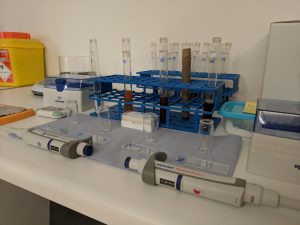
11) Testing something new
Adaption is the key to survival and, hopefully, thriving. But this requires change. Testing the ‘same old things to inform the same old practices’ has already created many problems that we are struggling to resolve. Like Einstein said “We can’t solve problems by using the same kind of thinking we used when we created them.”
Traditionally soil testing has generally always consisted of texture and basic chemical analysis. Our knowledge has grown and we know better than ever before that this is more complex than we can currently comprehend and that Soil is far more than the sum of it’s parts. You can our (simple) take on the Science of Soil here.
If you are always taking (carbon) and never replacing, it makes sense that, at some point, you will run out. How will you know when, if you don’t know how much there was to start with?
So I say, test something new today!
12) Think further ahead!
You only get one shot at understanding the soil at a point in it’s and your lifetime. Soil is dynamic and if you are growing plants or crops intensively, conditions will change. Even if you are managing soil perfectly, perfection (if you are lucky enough to achieve this miracle) will have existed for but a brief instant and then cease to exist any longer, until you restore balance or leave the soil alone for nature to run her course.
Therefore, I always recommend having the most comprehensive analyses that you can afford. This means that you will have the widest set of readings to compare “before” and “after” for conditions, after growing something or implementing changes to growing methods and can truly determine the magnitude of impact. Budget will come in to play with this and so prioritise the information that you require first to ensure to help manage the day to day, whilst investing in new data to increase your (long term) understanding of this precious natural resource. An example could be adding soil organic matter and a biological index test to your standard (P K, Mg) soil index test. These nuggets of information might just open the doorway to opportunities within your soil that you never knew were available!
The process is mainly common sense, but hopefully by focusing on some of the do’s and don’ts, this article will help you eliminate from your calendar, those handful of times when you might otherwise have considered taking (and paying) for the analysis of soil samples that would otherwise leave you with a costly and less than useful report.
– Simon
BTW – If you’re looking to move in to a new/sustainable/more natural approach of managing your crops and plants and spoil microbiology is all new to you, you might be interested in checking out the 1:1 Soil Biology – Personal Plan that we’re now offering. This will give you direct access to expert testing and advice to start changing the way you think, use and interact with your soil.
Did you enjoy this article? Make sure that you’re signed up and to our newsletter to get an email telling when we’ve posted again!
And, if you have any ideas for subjects that you would like us to cover, feel free to let me know.

